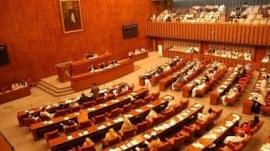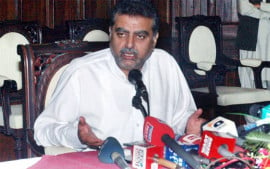
The ongoing violence in Hazara has made most Pakistanis sit up and take notice of the issue of naming a province.
The violence underscores the need for revisiting some fundamentals of the third republic in Pakistan. When the Republic of Texas joined the US in the 19th century it had the right to divide itself into 5 smaller states allowing the state to have 10 senators instead of 2 in the US upper house but this option was never seriously considered till recently.
Dwindling Republican support in Congress, attributable primarily to its hard right turn in recent years, has forced possibly the most conservative state of the American Union to consider a voluntary division so as to bolster the Republican and far-right wing vote in the Senate. Modern Pakistan, with an estimated population of 175 million, consists of only four unnecessarily large and unwieldy provinces that continue to adversely affect Pakistan’s federal structure.
The state’s refusal to re-consider these provinces along rational lines is one of its greatest failures. In theory, this is simple: divide the country into as many as 20 provinces of equal geographical area instead of population. This would allow affirmative action for the people of Balochistan in the Senate, and balance out Punjab’s existing majority in the lower house of the parliament.
It would give recognition and protection to multiple identities at play within the federation. Both in terms of an even spread of development and symbolically as the electoral college for the office of the country’s president. This would allow for greater imagination as well as participation of all of Pakistan’s citizens.
The principle of federation can be bolstered by giving the Senate equal legislative powers at the National Assembly, and in some matters greater power than the National Assembly. It is a costly proposal but one which would have far-reaching consequences for our federation. An equitable distribution of sovereignty shall automatically bring about an equitable distribution not just of wealth but of population as well.
It would take pressure off of our major cities and make them manageable. Given a choice, most people would like to stick closer to home. This would translate into a natural federation with the federating units having substantial autonomy and power instead of the current state which is heavily centralized. It is not difficult to imagine the opposition to such re-distribution.
It will come from the entrenched feudal and political elite of the existing provinces who have long sought a position of primacy for their parochialism in this state. To them such a scheme would mean a loss of privilege and prestige. Sanctity of provincial boundaries would be argued as the gospel truth.
The 20 provinces scheme would strike one clean blow at the decaying remnants of feudalism in this country and empower people at a basic level. This is the reason it would probably never be considered.





















1713246307-0/OIP-(2)1713246307-0-270x192.webp)
_updates1713245447-0/1178596_7858743_Salman-Khan-(2)_updates1713245447-0-270x192.webp)






















COMMENTS (7)
Comments are moderated and generally will be posted if they are on-topic and not abusive.
For more information, please see our Comments FAQ